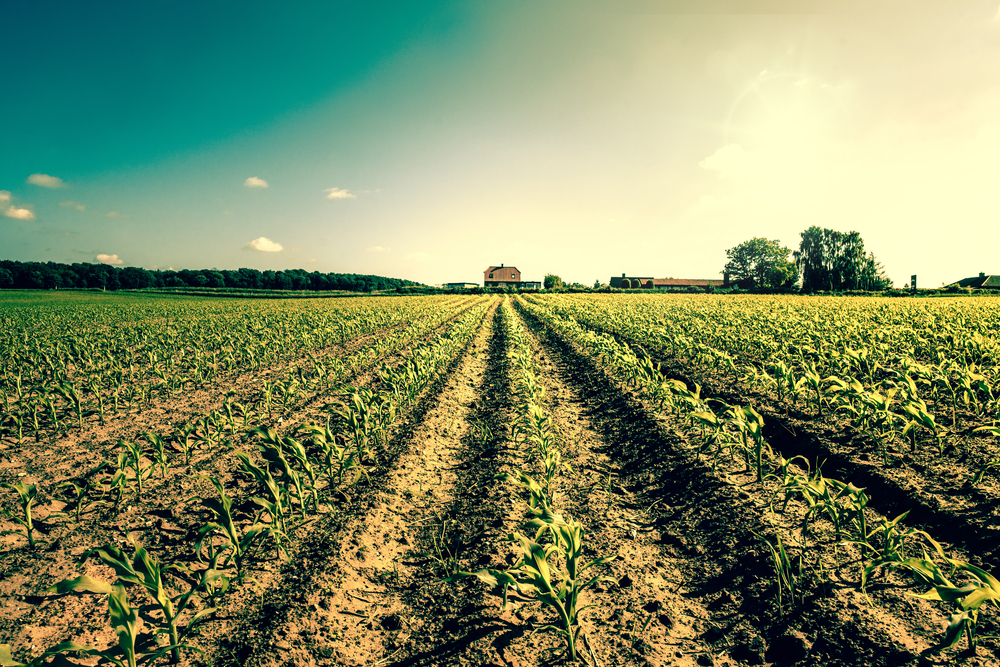A new study says that half of all farms globally will disappear by the end of the century, while the average size of existing farms will double. Here’s why that’s a problem.

A study from researchers at the University of Colorado, Boulder predicts that the number of farms worldwide will significantly shrink by the end of this century, posing problems in our food system.
Published in the journal Nature Sustainability this spring, the study created a model of farms worldwide to look at past patterns and predict their effects into the future. Beginning with global farm numbers from 1969, researchers modeled their evolution into 2100.
According to their current trajectories, the number of farms is predicted to drop to just 272 million by the end of this century from 616 million in 2020.
At the same time, the average farm size is predicted to double. The study shows that some areas, including Europe and North America, will see a relatively steady decline in farm numbers, while other areas, including Latin America and North Africa, will go from a period of farm creation to one of consolidation by mid-century.
Lead researcher Zia Mehrabi, a professor of environmental studies, used data from the UN Food and Agricultural Organization to look at agricultural areas, economic output and population size of more than 180 countries.
One of the main reasons Mehrabi found for the decline is economic growth. As a country’s economy gets stronger, Mehrabi found, more people leave rural areas for urban ones, with fewer folks able to tend to rural farmland. That could have devastating effects on our food supply.
“Larger farms typically have less biodiversity and more monocultures,” Mehrabi said in a news release. “Smaller farms typically have more biodiversity and crop diversity, which makes them more resilient to pest outbreaks and climate shocks.”
Mehrabi’s research points to farm and land consolidation; even if the amount of total farmland stays roughly the same, his model shows that fewer people will own that land. Fewer farmers means less knowledge transfer passed from generation to generation, as more and more farm work will be automated.
This decline in farms is already occurring. Within the US, the number of farms has been falling slowly since the 1980s. In 2022, there were 2 million farms noted across the country. That’s a drop of 200,000 farms from 2007 numbers.
“Currently, we have around 600 million farms feeding the world, and they’re carrying eight billion people on their shoulders,” said Mehrabi. “By the end of the century, we’ll likely have half the number of farmers feeding even more people. We really need to think about how we can have the education and support systems in place to support those farmers.”
“By the end of the century, we’ll likely have half the number of farmers feeding even more people. We really need to think about how we can have the education and support systems in place to support those farmers.”
Of course another and possibly more sustainable solution might be to try and make farming more attractive by placing more value on food production, recognising the effort and dedication it takes to produce good food, and pay farmers accordingly.
Emily C.– it would be interesting to hear you thoughts in a followup story on the environmental and social impacts of this transition in farming.
Increasing FARM SIZE has several advantages including increased production per unit area. In INDIA there are several farmers owning just one hectare land in 5 to 6 farms or at places.
Need of the day is consolidation of land i.e instead of having one hectare land at 5 or 6 places as mentioned above, have it at one place which is more profitable and to increase overall production per unit area.
This is probably true, but not a new trend. As economies grow and develop, people move out of subsistence farming, and farms consolidate. A century ago, more than half of Americans worked in agriculture, today it’s about 3%, but there is nearly as much land farmed as there was in the past. Meanwhile, the productivity of these farms has increased tremendously. In the developing world, many countries are where the US was a century ago, in terms of the number of people in agriculture.
Its really a serious concern.
I am not familiar with this information. It is quite beneficial to me. I appreciate you sharing.